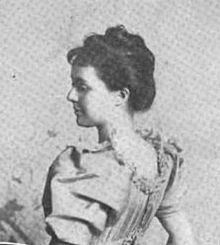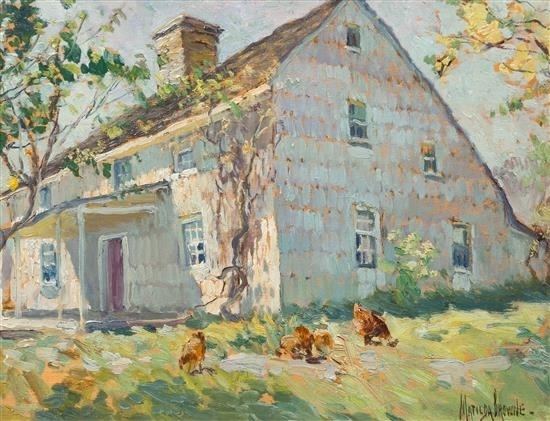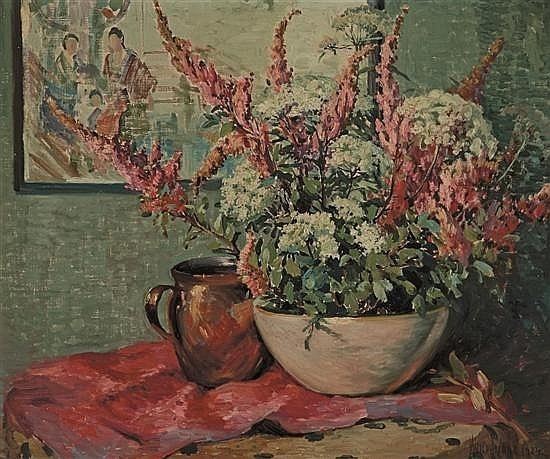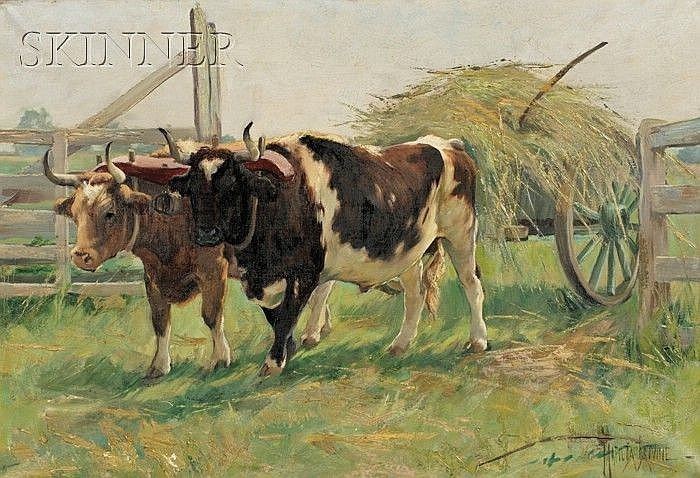Nationality American Awards Dodge Prize1889 Known for Painting Name Matilda Browne | Role Artist Spouse(s) Frederick Van Wyck Period Impressionism | |
 | ||
Died 1947, Greenwich, Connecticut, United States | ||
Meet Matilda Browne "Peonies"
Matilda Browne (May 8, 1869 – November 3, 1947) was an American Impressionist artist noted for her flower paintings and her farm and cattle scenes. Born in Newark, New Jersey, Matilda Browne was active in Greenwich, Connecticut, New York City, and Old Lyme, Connecticut, where she was affiliated with the art colony centered at the Florence Griswold home. She was the only woman at the Old Lyme Colony who was taken seriously as a painter by her male colleagues, and she was considered an important member of the Old Lyme group. A child prodigy, she received early art training from her artist-neighbor, Thomas Moran.
Contents

Meet Matilda Browne Still Life with Flowers
Biography

As a child in Newark, New Jersey, Browne lived next door to the artist Thomas Moran famous for his landscapes and particularly for his large paintings of Yellowstone National Park. He allowed his 9-year old neighbor into his studio to watch him work before inviting her to experiment with paint, brushes and canvas on her own. Her natural talent was obvious. He encouraged her to take additional art lessons, and by age 12 one of her paintings of flowers was accepted into an exhibition at the National Academy of Design in New York.

She soon became interested in painting farm animals and traveled with her mother to Europe in 1889 to study with animal painters in France and the Netherlands. Browne studied under a series of accomplished tutors—Eleanor and Kate Greatorex (1854–1917, 1851–1913), Frederick Freer (1849–1908), Charles Melville Dewey (1849–1937), Julian Dupré (1851–1910) in Barbizon, and Henry Bisbing (1849–1933) in the Netherlands. After returning from Europe in the early 1890s, Browne returned to New York and began to exhibit in the metropolitan area. Most significantly, given her fondness for animal painting, she studied with Carleton Wiggins (1848–1932), a well known landscape and cattle painter. It was Wiggins who most likely provided her entry into the boardinghouse in Old Lyme. She later rented a house on Lyme Street in the center of the village.

At the age of 36, on her first visit to Old Lyme in 1905, the other artists at the Griswold boardinghouse asked Matilda Browne to paint on a door and she contributed a pair of panels on the door leading to Miss Florence’s bedroom titled Bucolic Landscape, forming a scene of calves grazing beneath a tree. She was also the only woman to be included in The Fox Chase mural about the art colony that Henry Rankin Poore was painting over the dining room fireplace. These were extraordinary honors, since this all-male colony generally looked down on female artists – exemplified by the work of Willard Metcalf with his painting Poor Little Bloticelli (1907).

She worked in Greenwich, Connecticut, working at Cos Cob, in the late 1890s, and on and off throughout her career; she worked in Old Lyme from 1905–06 and periodically from 1911-24. Sometime around 1918 she married Frederick Van Wyck, and lived in New York with her husband. In 1932 her illustrations were published in her husband’s book, Recollections of an Old New Yorker. She died in Greenwich, Connecticut on November 3, 1947 at the age of 78.
Awards

